The first in a series of aesthetic appreciations of sublime machines.
The early stages of a technology are always the most aesthetically evocative. One of the most charming inventions from the time of the dawn of human flight is the dirigible.
The dirigible was invented at the last gasp of the era of heroic European exploration; Edwardian times or thereabouts. In my opinion, this is one of the great spiritual eras humanity has yet experienced. Everything superior in our present civilization peaked or dates from that era. From classical music, to capitalist industry, to modern science, to gentlemen’s clothing styles, to philosophy, to practical mathematics, to modern weapons; everything that is great about Western Civilization dates from around the time they invented the dirigible. When the history of the world is finally done, that time will be looked upon as being as defining as the golden age of Greece, the Italian Renaissance or the era of Augustus. Everything that came after was a repeat at best of what happened in those days. We don’t think of scientists without thinking of Einstein. We don’t think of industry without thinking of the early 20th century steel mill. We don’t think of men’s suits without thinking of old Saville Row. We don’t think of rifles which are appreciably different from those available in those days. Those days define our best qualities as certainly as the time of Marcus Furius Camillus defined the ancient Romans.
So it is with the Dirigible. This machine represented a sort of peak in mechanical embodiment of the adventurous spirit, when men would invent ridiculous machines, wear scarves and goggles, and go face the wild blue yonder with a giant bag of (generally explosive) gas, a latticework of the new wonder metal of aluminum, and some propellors. An airman was seen as a sailor of the skies; a much different thing from aeroplane pilot. There was no GPS. No weatherman of any use. Even radio was pretty wonky and primitive (and, in fact, on a hydrogen airship, quite a fire hazard). Survival of the airship depended on the mechanical genius, leadership skills and weather sense of the captain, and the teamwork and skill of a large crew. It didn’t always work out so well. Dirigibles were probably about as safe as the space shuttle, which is to say, not very.
When we watch science fiction today, these space romances often take place against the backdrop of what is essentially an airship, jazzed up with some knobs and buzzers. They’re big, they have lots of room in them, they have large crews and lots of workshops and peculiar looking technology, they get where they are going in a few days; shucks, many of them even look like airships. The V-2 rocket, which influenced how we think about what a space ship should look like, looked physically like a dirigible standing on its tail. There was no real reason for it to look that way (modern missiles are much more functional looking), except that the shape represents the vision of the future of that era.
In the old days, UFO’s were all shaped like the Graf Zepplin. People always saw UFO’s, but they interpreted them differently. In the 1950s, when we feared communism, they were evil aliens come to rape our women. In the 60s and 70s, they were sort of good angels come to teach us how to be better space cadets. In the 80s, when people were generally nervous about whether they blew their brains out in the 70s, they were creepy molesters who crossed the vastness of interstellar space to molest fat waitresses from Idaho. Well, in Edwardian times, UFOs were dirigibles piloted by Jules Verne style inventor eccentrics headed to California; the same guys who had been freaking everyone out with wireless telegraphy and the bessemer process and such.
They’ve very appealing machines, in the same sense that a steam engine is appealing. They’re machines which look like you could understand them if you had to. They are too much for one person to handle; they require teamwork, and there is no way you could ever dream of building one, but the basic idea can be understood. As a mode of travel, they are also very appealing. They go around the same speed as a car or a train, but are smoother and quieter, and give better views. Plus, they have lots of wide open spaces to go lounge about and drink elegant cocktails in, while sporting a nice dinner jacket.
The dirigible was eventually killed by that which has attempted to kill everything which shows some spirit or character: the mass media. I won’t remind you all of the images which ruined airships for humanity. I have this recurring fantasy that airships will eventually come back into vogue, along with quality thinking, gin martinis, grey flannel trousers and cool uniforms. It’s probably ridiculous, like the idea of building a steam engine equipped boat in modern days, but I have the fantasy anyway.


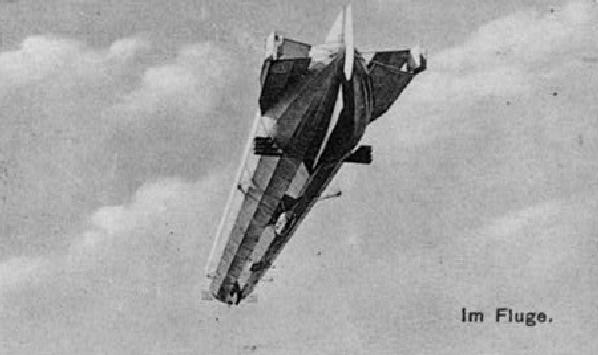
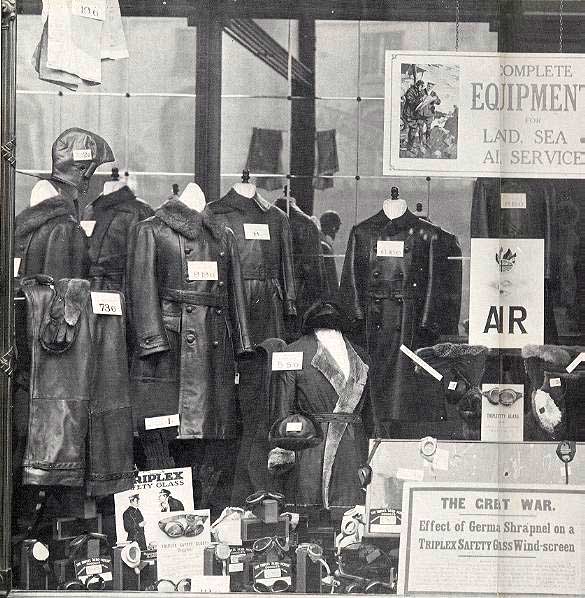
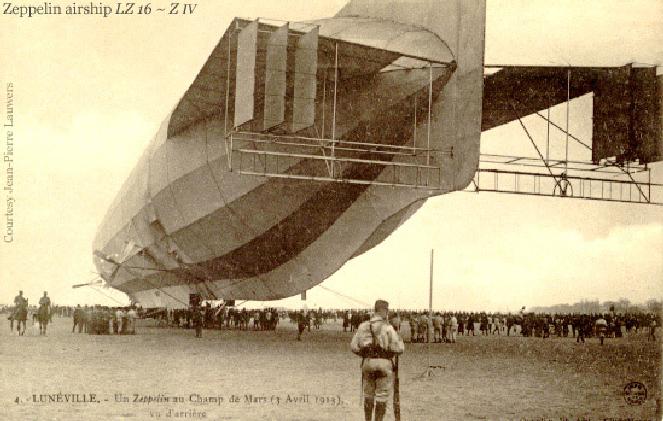
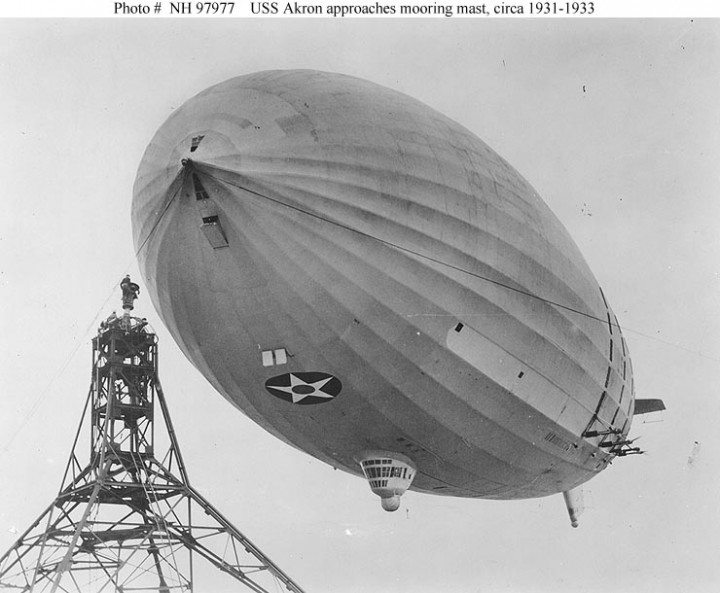
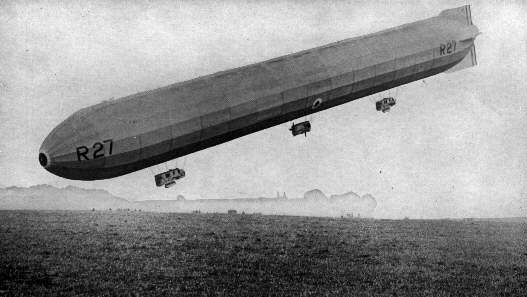
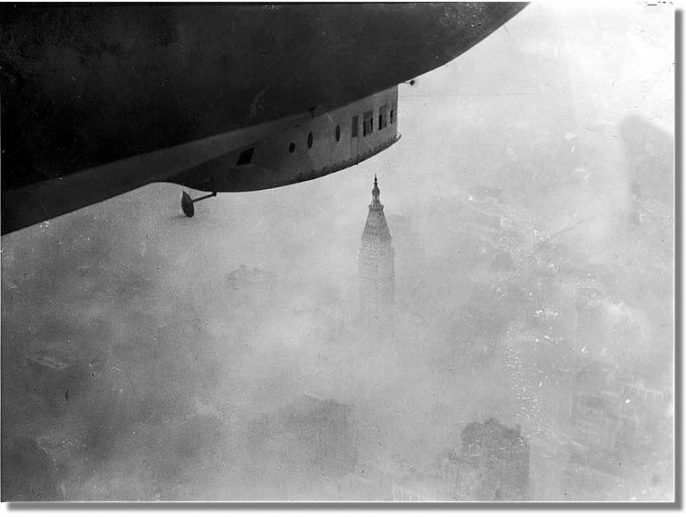










I imagine they were quite terrifying, even if you didn’t know about the hydrogen.
How about one of these?
supercool stuff Scott – you’re right, everything about airships are cool – including the hangers
Loved every word of this Scott. So much atmosphere, and you’re right: everything superior.
I feel proprietorial about airships, to give them the later name I’ve always known. The two great hangers at Cardington, famously big enough to generate their own weather systems inside, were visible from my bedroom window. The Vicar of Cardington’s son was my friend, and from his window he had the R101 mass grave: we spent a fair amount of time as boys inspecting the scorched R101 flags which hung in the church. John G. Fuller’s spooky <The Airmen Who Would Not Die kept us awake for months.
Had Barnes Wallis’s R100 not been up against the government’s own child,the more glamorous and altogether flakier “safe as houses” R101, who knows: it was the HST to the R101’s APT and might have kept the (rugby) ball in the air just a little longer than proved to be the case.
But we did get the Wellington bomber out of it, and they still build airships of a kind at Cardington (naval, weather, advertising): in Bedfordshire, you’ve always been able to look up and see a familiar cigar or cylinder floating low overhead. The dreams of elsewhere that airships provoke – kept me, and many others in Bedfordshire, going until the day came when we could leave the bloody place.
You mean that Gin Martinis and grey flannel trousers are out of vogue? Sheesh, the wife could have told me, at least.
You’re in good company, dreaming of the return of the Zeppelin, Scott: George Monbiot is on board.
http://www.guardian.co.uk/commentisfree/2008/may/06/travelandtransport.carbonemissions
Excellent article, but I have a couple quibbles:
… everything that is great about Western Civilization dates from around the time they invented the dirigible.
I would have thought that everything great about Western Civilization, including all the inventions, is a consequence of The Enlightenment.
We don’t think of rifles which are appreciably different from those available in those days.
Just yesterday I finished reading “The Gun”, which is about the history of the AK-47.
Its conclusion differs significantly.
Thanks for the kind words, links and stories, gents.
@Skipper: Semiautomatic rifles are something of a technical improvement, though Jeff Cooper and I don’t think much of them as weapons compared to even a bolt action Mauser. Spray and pray is the tactic of people who lack self discipline, and there are better techniques and weapons for suppressive fire. A rifle is a precise instrument: something to be used by disciplined men. Of course, these days, such men are in short supply, hence, the “assault rifle.” I have a Swedish Mauser from 1912; it’s a tack driver: the most accurate open sight rifle I’ve yet used, and much more accurate than 99% of semi autos you can buy. I suspect it will be driving tacks in 100 or 200 years with the same wood and iron, if it is taken care of properly. Like some legendary old sword found in a barrow in the Sagas, it is a weapon for many generations. I’d rather have it (preferably in carbine format) than any plastic “black rifle” if I were in a bad situation. Cooper’s writings on this topic might appeal to the non-hopolophobes among you.
http://www.dvc.org.uk/jeff/
This one is a bit apt:
http://www.dvc.org.uk/jeff/jeff7_5.html
“The second shot is a great help, perhaps even a necessity, in pistolcraft, but I wonder how much we need it in a hunting arm. On dangerous game I guess it can be useful, but rapid fire is a military exercise. If you are attempting to repel hoards of screaming Zulus, an M1 or an M14 might be very comforting. But we have not needed to do much of that since flintlock time. (And flintlocks did the job beautifully at Blood River.)”
You guys are inspiring me to write about rifles one of these days. I’ve already got one in the pipe about heavy WW-2 era bombers and one on the age of steam engines.